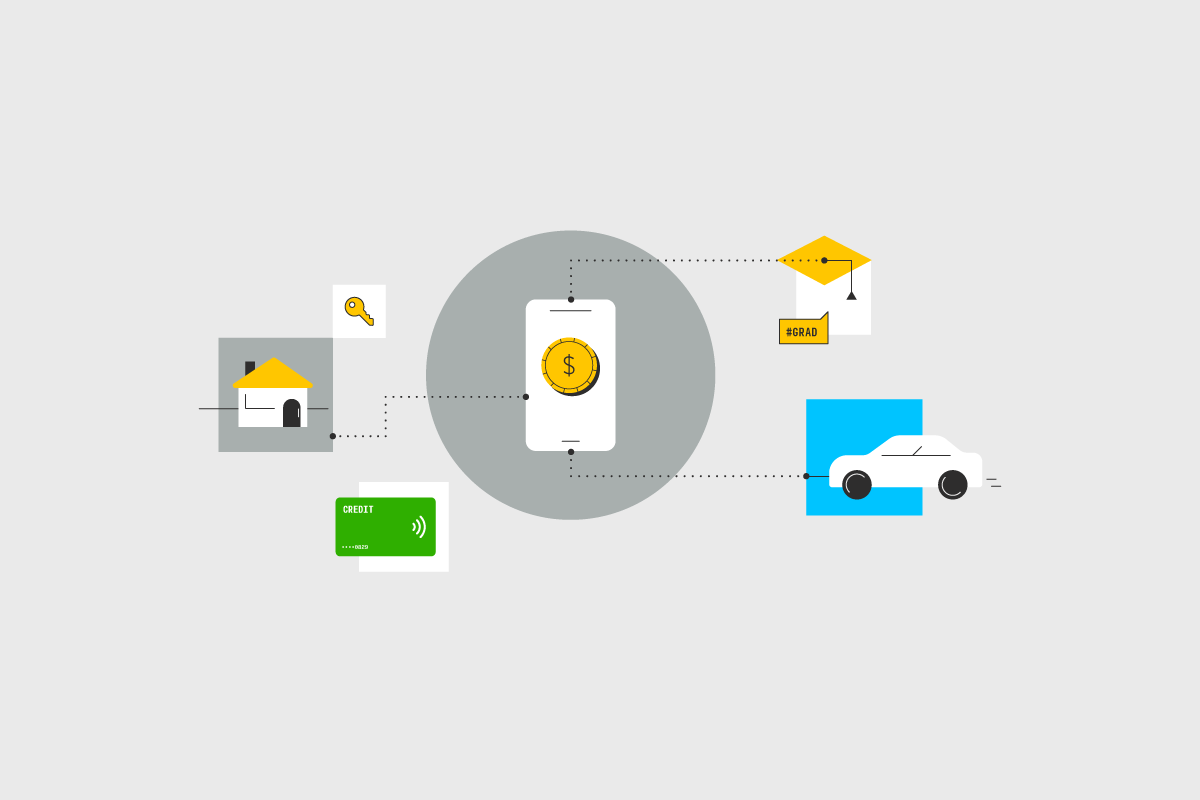Blog
How open banking payments can help streamline consumer lending
May 2, 2023
Editorial Team

Consumer lending is on the rise in the United States, with recent research showing that over 22 million Americans collectively owe $210 billion in personal loans. This represents a significant increase from the $102 billion owed in 2016, highlighting a growing trend in borrowing.
Despite the popularity of consumer lending, however, the application process can be arduous, with many hurdles to navigate before receiving funding. Fortunately, open banking has emerged as a solution to these challenges.
By leveraging open banking, institutions can improve the customer experience and streamline their operations. In addition, with real-time data sharing and seamless payment initiation, open banking can reduce fraud risk, enhance credit scoring accuracy, and increase loan approval rates, ultimately benefiting lenders and borrowers.
Application processes become efficient
Getting to the loan approval stage involves many steps, some of which are error-prone due to manual data entry. Open banking automates some steps, offers better insight into a consumer's creditworthiness, and improves the application process for both lenders and consumers.
In fact, according to a 2021 study, "an overwhelming majority (99%) of lenders believe that technology can help improve the mortgage application process, citing benefits that include simplifying the entire process (74%), reducing time to close (70%) and minimizing data entry (67%)."
They weren't wrong.
Open banking uses application programming interfaces (APIs) to develop and integrate software. With all the complete financial information in one place, lenders get a more comprehensive insight into an individual's borrowing ability.
Additionally, lenders can access a borrower's financial data in real time, with the borrower’s permission, of course, eliminating the need for manual data entry and verification. This benefit can reduce the time it takes to assess financial information, process an application and provide a faster decision on loan approval. Mastercard already uses open banking to improve the lending process for consumers and lenders.
Consumers also benefit from an efficient application process, with "32% of small business applicants turning to online lenders" in 2022. As more financial institutions consider open banking as a lending solution, they can reap the benefits that come with it.
Approval and disbursement of funds are faster
Before open banking, consumers had to gather information and supply paperwork from various sources, leading to an inconvenient application process. But as mentioned earlier, open banking centralizes that information, resulting in speedy decisions and disbursement of funds.
Typically an approval process can be anywhere from a few business days to a few weeks. According to Ellie Mae, it takes 52 days on average to close a loan, from the day of application to the disbursement of funds.
Banks and credit unions still rely on human staff to underwrite loans, leading to longer approval times. These traditional financial institutions also have strict loan eligibility criteria, meaning they must manually process a borrower's credit history, causing further delays.
As Joe Tyrrel, president of ICE Mortgage Technology, says, "It's not enough to use data to understand 'what' happened in the past. Lenders need to understand what is happening right now and what is likely to happen in the future, while they still have the ability to take corrective action and/or make critical decisions."
Open banking APIs allow lenders to automate the process of gathering financial information from borrowers, eliminating the need for manual data entry. By directly accessing a borrower's financial data, lenders can quickly verify income, expenses, credit score, and payment history, reducing errors and saving valuable time. With this data, lenders can make informed lending decisions and accelerate borrowers' approval and disbursement of funds.
For example, Infosys worked with a non-banking financial company (NBFC) in India to build an open banking aggregator platform within the ReBIT Account Aggregator open banking specification. Through the Infosys Banking API platform, the NBFC could disburse funds faster while remaining 100% compliant with the open banking specifications.
Finally, with faster approval and disbursement of funds, institutions can also improve the customer experience, leading to higher satisfaction and retention.
Risk assessment is comprehensive
Open banking and its secure APIs can help lenders make more informed decisions about the borrowing ability of an individual and, therefore, make more accurate risk assessments.
According to McKinsey, "To model credit risk, new-to-market lenders will need to aggregate data from a broad range of sources. They can make up for any lack of credit expertise by capturing diverse data, including data that they own exclusively."
Unlike traditional credit scoring methods that rely solely on credit scores, open banking allows lenders to consider various financial data points. This provides a more comprehensive view of a borrower's financial situation, leading to a more accurate risk assessment and potentially lower default rates.
For example, open banking gives lenders precise and current data about borrowers' finances, enabling them to detect red flags such as missed payments or high debt levels that indicate a higher risk of default. In addition, lenders can assess their creditworthiness by analyzing a borrower's spending and saving habits over time.
That's not all. "Financial institutions can [also] build trust and strengthen their brand among customers by investing early to build open banking programs embedded with risk management and privacy principles," as pointed out in an EY report.
By leveraging up-to-date data, analyzing financial behavior over time, and considering a range of financial data points, lenders can make more informed lending decisions, reduce risk, and improve profitability.
Boost your profitability through open banking
Open banking can save banks significant expenses by transforming the lending process. Thanks to secure APIs, lenders can access a borrower's financial data directly, reducing costs associated with manual data entry and paperwork and reducing the risk of default and write-offs. Additionally, through easy, direct disbursement of funds, open banking also reduces the costs that usually come with issuing checks or conducting wire transfers.
Given the numerous benefits of open banking, financial institutions must recognize its value and make the transition sooner than later. Link Money provides a direct, consumer-permissioned connection to the consumer’s bank account—with smart decisions around payment—so there are fewer incidents of non-sufficient funds. Link Money can also help with account validation and, in fact, often builds bespoke products to address customer needs.